It is time for our traditional SKU List and Value Analysis piece for the AMD EPYC 7003 “Milan” series. We have been doing this series looking at pricing for different CPUs for many years now. Taking a look at a SKU list often gives us insight into value, as well as the pricing methodology that companies use to price new products. We are using list price for these, not street price which may be different.
AMD EPYC 7003 SKU List Prices
Here is the basic table for list pricing of the new parts. We are including the frequency optimized parts and showing all of the dual-socket capable parts.

Something that is readily apparent is that the “F” series SKUs are much more expensive than their standard counterparts. The “F” stands for frequency-optimized. These parts are designed for per-core licensed software where there is more value in scaling up the performance of each core than providing more cores in a system.
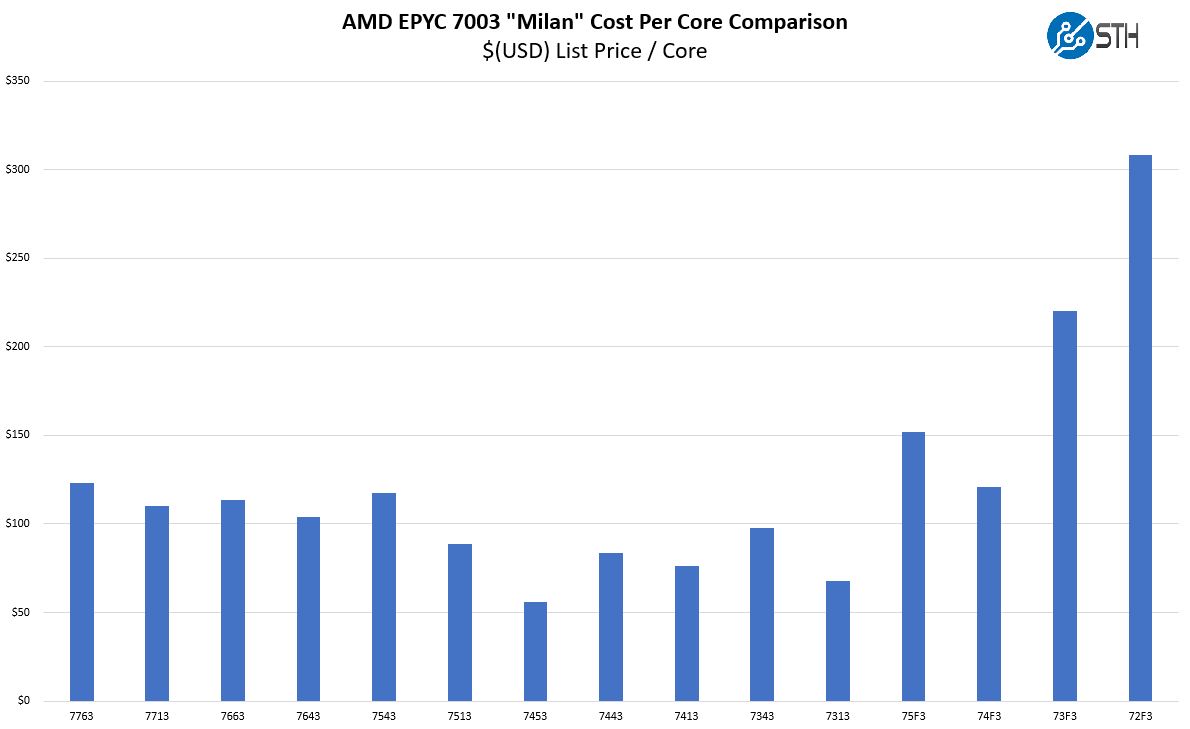
The processor that sticks out the most is likely the AMD EPYC 7453. There was some debate on what this part is. To us, this is AMD’s response to 28 core Intel processors. It has a relatively paltry 64MB of L3 cache per CPU which is just under 2.3MB/ core. This puts it more in-line with the Intel Xeon Gold 6258R in terms of core count and L3 cache capacity. At the same time, it is also the most aggressively price CPU at $56/ core which is significantly less than even the “value” option the EPYC 7313 at $68/ core. While Intel Ice Lake Xeons may be the more time contemporaneous competition in the market, the fact is that AMD needs to compete with 2nd Gen Intel Xeon Scalable Refresh systems already shipping.
On the single socket side, here is what the story looks like:

One item we noticed in the pricing is that at the EPYC 7313P SKU level, it is still more per core than the EPYC 7453 mentioned above. The best value SKU is perhaps the EPYC 7443P at $1337 if one is looking to get a reasonable core count at a good price.
Generational Comparisons
We pulled the frequency optimized SKUs and just wanted to look at the SKU stacks between the AMD EPYC 7002 and EPYC 7003 series side-by-side Here is what that looks like:
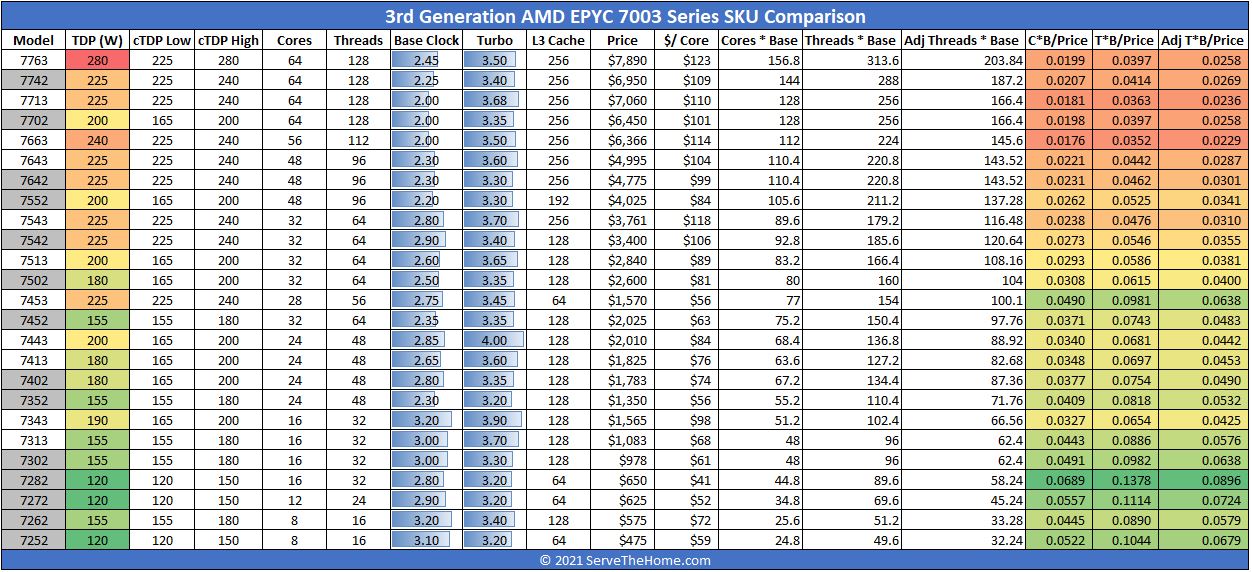
At the top-end, the EPYC 7763 is fascinating. To us, this is more of a AMD EPYC 7H12 replacement rather than for the EPYC 7742. It seems as though the EPYC 7713 is taking the place of the EPYC 7742 in this generation which would mean that we had a $110 jump in price there which is relatively modest.
Here we can see that AMD has done a bit of rationalization at the 48-core level, releasing only a single SKU.
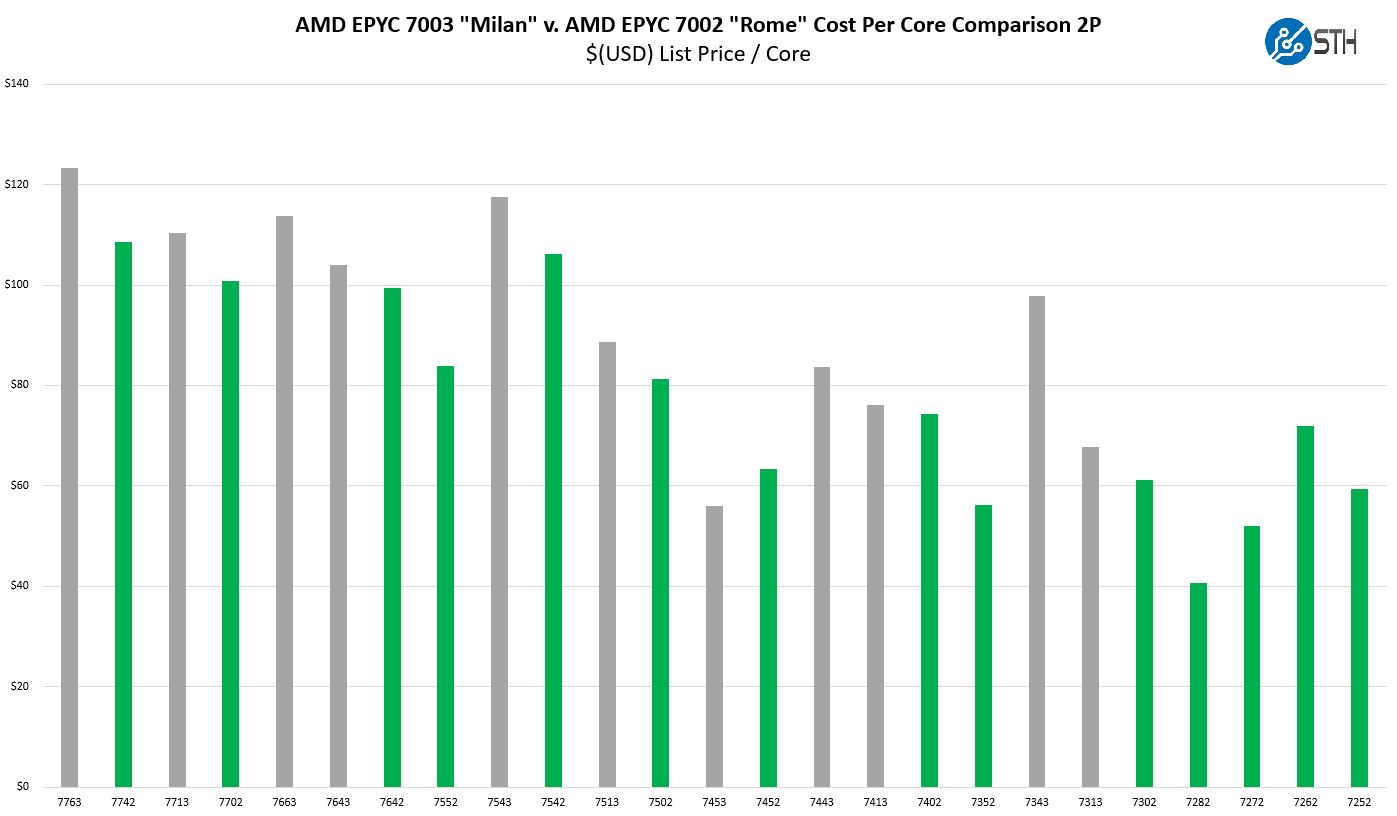
The ASP seems like it will be higher in this generation. In the above chart, we are using the retention bracket colors, grey for the EPYC 7003 “Milan” and green for the EPYC 7002 “Rome” series. One can generally see an upward pricing trend. We were going to use an average, but with the lack of the 4-channel optimized SKUs at the low-end, the straight generational comparison will be skewed with that metric. Also, that lower-end 4-channel optimized EPYC 7002 “Rome” SKU stack is going to be largely carried over in this generation.
Here is what the single socket comparison looks like compared to the previous generation of “P” series parts:

One can see that TDPs are going up, but so are prices. At that AMD EPYC 7443P/ 7402P level, we get a fairly massive clock speed jump, however, the price is up less than 7%. All of the other SKUs jump in price from about 10% to 19%. The biggest increase is the EPYC 7543P/ 7502P. Here the P-series part jumps 45W TDP but also in base and turbo clocks along with doubling the cache. As a result, we get an 18.7% increase in price which is significantly more than the 13.2% we get at the 64-core level.
Here is what the generational improvement offers:
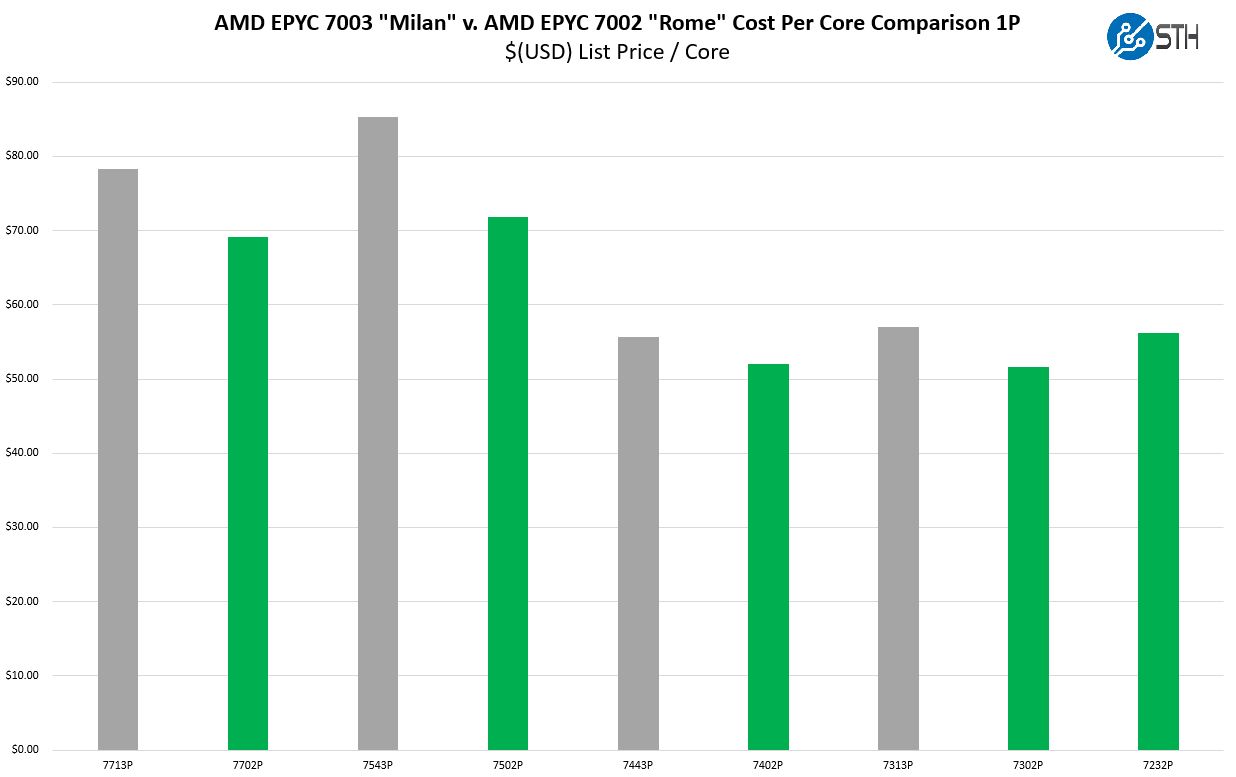
At 32+ cores AMD is seeing a lot of upward price movement.
Final Words
This analysis is only half of the story. The 3rd Gen Intel Xeon Scalable Ice Lake Launch is less than two weeks out. Where AMD had the only PCIe Gen4/ 8-channel x86 offering with the EPYC 7002 generation that could scale beyond 28 cores, Intel will apply pressure across more of the SKU stack with a more directly relevant offering. AMD certainly delivered more performance with Zen 3 and the EPYC 7003 series and is trying to extract a premium. Once Ice Lake launches, this list price premium may end up being a discounting tool although moving to higher discounting levels has implications on future pricing. Intel showed why moving to a higher list price/ discount is dangerous with its need to launch the Cascade Lake “R” refresh SKUs cutting list price by around 60% for its products.

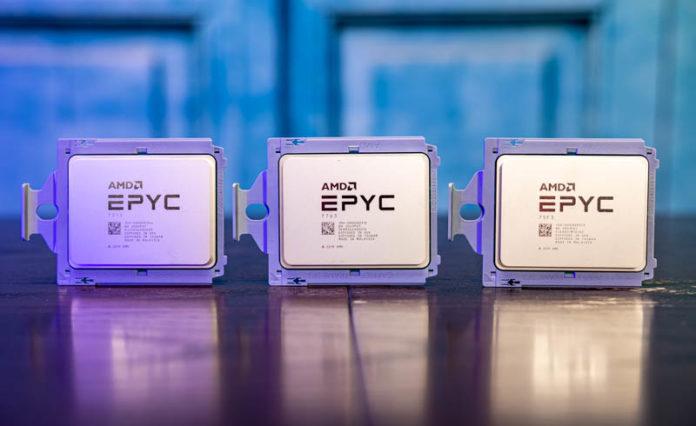



The 7453 is beautiful. Every time I look at your charts and look at it’s place I start to cackle a little bit.
The 7443P is the CPU for the true elite
The charts don’t consider Zen3 vs Zen2 turbo or IPS improvements, and so they misrepresent
Zen3 SKU value dramatically.
Also, consider that not everyone is running their servers at 100% utilisation 100% of the time. If turbo had no value, CPU vendors would not be offering it as a differentiating feature. Low latency for transaction processing has significant value.
For example, the 7443P is going to slaughter the 7402P in every metric except absolute cost, yet look at how it is ranked relative its Zen2 predecessor.
Ultimately, the charts are not counselling visitors to make the most beneficial decision.
William – we tend to review every SKU. Even a few days after launch we have already published benchmarks on around a quarter of the SKU stack (with formal review pieces coming.)
I always appreciate your reviews Patrick. The value charts above though, are misleading, for the reasons I’ve shared. You’ve made a fair bit of noise about the vendors putting out misleading information, so I’d like to think you’d be grateful when someone points out when you’re putting out misleading information..?
William – I think the challenge is that you are looking for performance metrics that we do in our CPU reviews. This is focused on specific SKU features and pricing metrics such as $/core, $/GHz, and such. We have been doing this for years since that is a major consideration in pricing over time. I think you are saying this is misleading because of an assumption that this is tied to performance. This is not ranking, it is looking at what the SKUs are and trying to see the pricing strategy.
How about the availability? We can only get the hi-end parts. All the other parts are available starting on June/July…
This sort of scorecard view (all in one place) is pretty useful. Wish there were an up-to-date version. (Yeh, that might be a lot of work. Maybe on a wiki?)
My present work is putting compute into fancy radars, not cloud or data center (past work). From the article, the EPYC 75F3 looks interesting as most compute/thread. But since March are there other choices?
Just a note in passing…